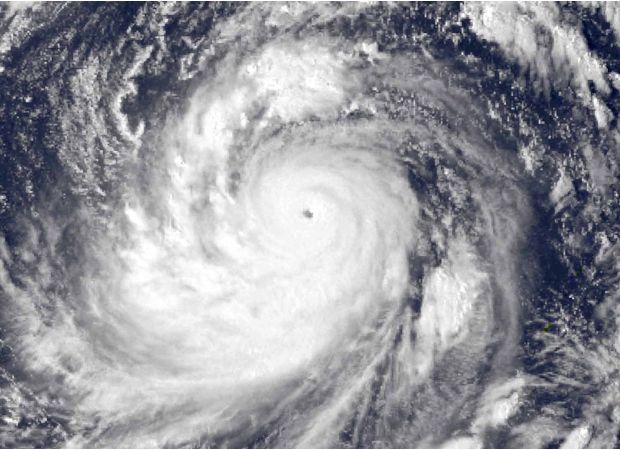Learn about the massive 1,380-mile storm that holds the record for the largest in the world.
Typhoon Tip's diameter was 1,380 miles, longer than the distance between London and Romania.

In 1979, the JMA GMS-1 satellite captured a remarkable image of Super Typhoon Tip. The hurricane season in the southern US has been quite tumultuous, with Hurricane Milton causing mass evacuations in Florida. However, it did not hold the record for the largest storm in history. This title belongs to Typhoon Tip, which wreaked havoc 45 years ago in the Pacific Ocean.
The UK has also been facing its own set of challenges, with Storm Bert and Storm Conall bringing heavy floods and several casualties. Meanwhile, on the west coast of the US, a bomb cyclone has been causing chaos with strong winds and heavy snowfall. But looking back in time, Typhoon Tip was truly a force to be reckoned with. It reached its peak intensity on October 12, 1979, with a central pressure of 870 mb and a diameter of 1,380 miles. This super typhoon traveled for 20 days before eventually dissipating after making landfall in Japan.
The path of Typhoon Tip was closely monitored and recorded, with researchers from the US Air Force flying multiple missions into the eye of the storm to collect data. Despite its massive size, Tip was not the deadliest storm on record, nor did it have the fastest winds. However, it remains one of the most studied storms due to its size and intensity. In fact, it still holds the Guinness World Record for being the largest tropical cyclone.
Tip left a trail of destruction in its wake, causing millions of pounds worth of damage to industries in Japan and claiming the lives of 86 people. Among them were 13 US marines stationed in Japan, who tragically lost their lives in a fire caused by a fuel tank being knocked over by the storm. This serves as a reminder of the devastating consequences of such powerful storms.
According to forecaster Jim Dale, the founder of British Weather Services, hurricanes have been becoming stronger due to rising sea temperatures. He believes that while the number of hurricanes may not necessarily increase, their intensity will continue to escalate. This was evident with Hurricane Milton, which quickly intensified into a Category 5 storm in the Gulf of Mexico. Climatologists fear that this trend may continue, leading to more destructive hurricanes in the future.
Sadly, Typhoon Tip may soon lose its title as the largest storm on record, as climate change continues to fuel the formation of stronger and more destructive hurricanes. In fact, meteorologists are considering the possibility of adding a Category 6 to the current hurricane classification system, as future storms may surpass the limits of a Category 5.
The recent hurricanes, such as Milton and Helene, have brought attention to the pressing issue of climate change. While Hurricane Katrina may have been the result of a warming climate, Milton and Helene were undoubtedly strengthened by it. As Mr. Dale puts it, "We're going in one direction, and it's the wrong direction." The severity of these storms has led to discussions among meteorologists about the need for a stronger hurricane classification system.
As we continue to face the consequences of climate change, it is important to remember the deadliest storms in history, such as the Great Bhola Cyclone in 1970, which claimed the lives of up to half a million people in Bangladesh. With the current hurricane season still ongoing, there is a possibility of more destructive storms to come. Let us hope that we learn from the past and take action to mitigate the effects of climate change before it's too late. This article was first published on October 12, 2024.






